 W
WA motor vehicle service or tune-up is a series of maintenance procedures carried out at a set time interval or after the vehicle has traveled a certain distance. The service intervals are specified by the vehicle manufacturer in a service schedule and some modern cars display the due date for the next service electronically on the instrument panel. A tune-up should not be confused with engine tuning, which is the modifying of an engine to perform better than the original specification, rather than using maintenance to keep the engine running as it should.
 W
WThe 3,000 mile myth refers to a common belief, particularly in the United States, that all motor vehicles should have their motor oil changed at least every 3,000 miles (4,800 km) to maintain their car engine. Efforts are under way to convince the public that this is not necessary and that people should follow the advice given in their owner's manual rather than the advice of oil-change businesses. With modern synthetic oils and new tests such as BMW's LL oil specifications, most current cars can go over 6,000 miles (9,700 km) before needing an oil change. Even most modern conventional oils can take a car engine at least 5,000 miles (8,000 km) before needing an oil change.
 W
WAuto detailing is an activity of systematically performing operations and procedures that keep the vehicle in its best possible condition, especially cosmetic, as opposed to mechanical. This is achieved by removing both visible and invisible contaminants from the vehicle's interior, and polishing the exterior to its original blemish free finish.
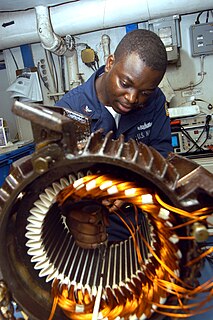 W
WAn electrician is a tradesman specializing in electrical wiring of buildings, transmission lines, stationary machines, and related equipment. Electricians may be employed in the installation of new electrical components or the maintenance and repair of existing electrical infrastructure. Electricians may also specialize in wiring ships, airplanes, and other mobile platforms, as well as data and cable lines.
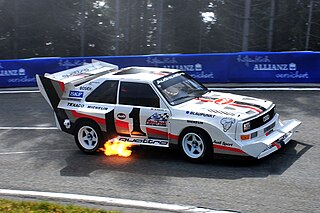 W
WA backfire or afterburn is combustion or an explosion produced by a running internal combustion engine that occurs in the exhaust system, rather than inside the combustion chamber. It is also sometimes referred to as an afterfire, especially in cases where the word backfire is used to mean a fuel burn that occurs while an intake valve is open, causing the fire to move backward through the system and out through the intake instead of the exhaust. When the flame moves backward it may also be called a "pop-back." A backfire can be caused either by ignition that happens with an exhaust valve open or unburnt fuel making its way in the hot exhaust system. A visible flame may momentarily shoot out of the exhaust pipe. A backfire is often a sign that the engine is improperly-tuned.
 W
WA vehicle breakdown is the mechanical failure of a motor vehicle in such a way that the underlying problem prevents the vehicle from being operated at all, or impedes the vehicle's operation so much, that it is very difficult, nearly impossible, or else dangerous to operate. Vehicle breakdowns have various causes. Depending on the nature of the problem, the vehicle may or may not need to be towed to an automobile repair shop.
 W
WCar Talk was a radio talk show that was broadcast weekly on National Public Radio (NPR) stations and elsewhere. Its subjects were automobiles and automotive repair, discussed often in a humorous way. It was hosted by brothers Tom and Ray Magliozzi, known also as "Click and Clack, the Tappet Brothers". The show won a Peabody Award in 1992.
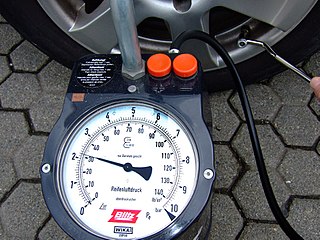 W
WCold inflation pressure is the inflation pressure of tires before the car is driven and the tires(tyres) warmed up. Recommended cold inflation pressure is displayed on the owner's manual and on the placard attached to the vehicle door edge, pillar, glovebox door or fuel filler flap. 40% of passenger cars have at least one tyre under-inflated by 6 psi or more. Drivers are encouraged to make sure their tires(tyres) are adequately inflated, as under inflated tires(tyres) can greatly reduce fuel economy, increase emissions, cause increased wear on the edges of the tread surface, and can lead to overheating and premature failure of the tire(tyre). Excessive pressure, on the other hand, may lead to impact-breaks, decreased braking performance, and cause increased wear on the center part of the tread surface.
 W
WIn an internal combustion engine, fuel starvation is defined as the failure of the fuel system to supply sufficient fuel to allow the engine to run properly, for example due to blockage, vapor lock, contamination by water, malfunction of the fuel pump or incorrect operation, leading to loss of power or engine stoppage.
 W
WThe Garage is a British television programme broadcast on Discovery. It features the staff of English Mobile Mechanics in Marbella, Spain, following the activities of the garage and initially it followed new staff hires as they adjusted to life in Spain whilst coping with their new jobs and their boss, Jock Campbell. As work in southern Spain depends on tourists or villa owners that winter elsewhere the Garage's trade is highly seasonal. Four out of the five new recruits found themselves with insufficient paid work so eventually announced that they were leaving and vacated their positions.
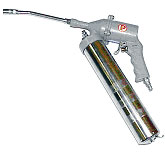 W
WA grease gun is a common workshop and garage tool used for lubrication. The purpose of the grease gun is to apply lubricant through an aperture to a specific point, usually from a grease cartridge to a grease fitting or 'nipple'. The channels behind the grease nipple lead to where the lubrication is needed. The aperture may be of a type that fits closely with a receiving aperture on any number of mechanical devices. The close fitting of the apertures ensures that lubricant is applied only where needed. There are four types of grease gun:Hand-powered, where the grease is forced from the aperture by back-pressure built up by hand-cranking the trigger mechanism of the gun, which applies pressure to a spring mechanism behind the lubricant, thus forcing grease through the aperture. Hand-powered, where there is no trigger mechanism, and the grease is forced through the aperture by the back-pressure built up by pushing on the butt of the grease gun, which slides a piston through the body of the tool, pumping grease out of the aperture. Air-powered (pneumatic), where compressed air is directed to the gun by hoses, the air pressure serving to force the grease through the aperture. Russell Gray, inventor of the air-powered grease gun, founded Graco based on this invention. Electric, where an electric motor drives a high pressure grease pump. These are often battery-powered for portability.
 W
WA headlamp beam tester is a means to check both the orientation and intensity of a vehicle headlamp to ensure that it meets a minimum standard for the country of use of the vehicle. In the United Kingdom, a headlamp beam tester is used to assess the headlight during an MOT test but in order to be used it must be approved as suitable for use in the scheme. A list of acceptable headlight testers for use within the MOT test scheme is listed on the Department of Transport website.
 W
WA jump start, also called a boost, is a method of starting a vehicle that has a discharged or dead battery. A temporary connection is made to the battery of another vehicle, or to some other external power source. The external supply of electricity recharges the disabled vehicle's battery and provides some of the power needed to crank the engine. Once the vehicle has been started, its normal charging system will recharge, so the auxiliary source can be removed. If the vehicle charging system is functional, normal operation of the vehicle will restore the charge of the battery.
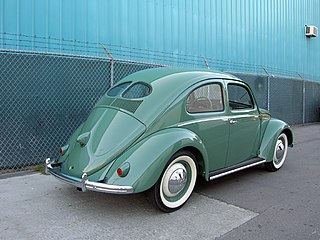 W
WThe preservation and restoration of automobiles is the mechanical or cosmetic repair of cars. For example, the guidelines of the Antique Automobile Club of America (AACA) are to "evaluate an antique vehicle, which has been restored to the same state as the dealer could have prepared the vehicle for delivery to the customer."
 W
WThe 1987 National Junior Mechanics Competition (NJMC) event for the Road Transport Industry Training Board (RTITB) National Mechanics Competition was held on 24 June 1987 at MOTEC 1 located at High Ercall, a former RAF base.
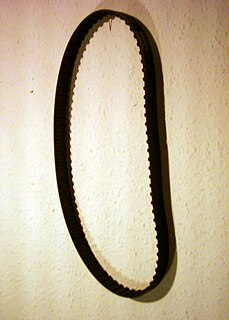 W
WA timing belt, timing chain, or cambelt is a part of an internal combustion engine that synchronizes the rotation of the crankshaft and the camshaft(s) so that the engine's valves open and close at the proper times during each cylinder's intake and exhaust strokes. In an interference engine the timing belt or chain is also critical to preventing the piston from striking the valves. A timing belt is usually a toothed belt—a drive belt with teeth on the inside surface. A timing chain is a roller chain.
 W
WA car wash or auto wash is a facility used to clean the exterior and, in some cases, the interior of motor vehicles. Car washes can be self-serve, fully automated, or full-service with attendants who wash the vehicle. It may also be an event where people pay to have their cars washed by volunteers as a method to raise money for some purpose.
 W
WWheel alignment sometimes referred to as breaking, or tracking is part of standard automobile maintenance that consists of adjusting the angles of wheels to the car manufacturer specifications. The purpose of these adjustments is to reduce tire wear and to ensure that vehicle travel is straight and true. Alignment angles can also be altered beyond the maker's specifications to obtain a specific handling characteristic. Motorsport and off-road applications may call for angles to be adjusted well beyond normal, for a variety of reasons.